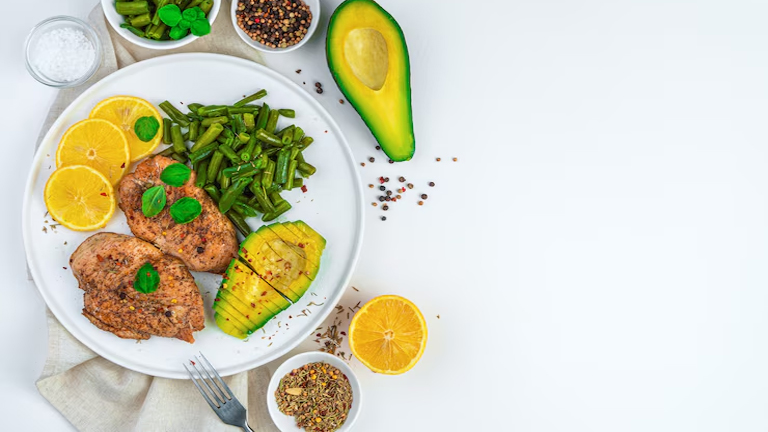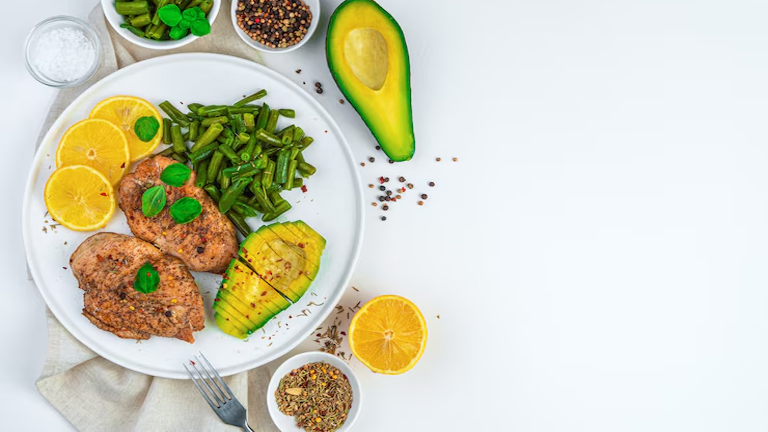The Paleo Diet, also known as the whole foods diet or primal eating, is a nutritional approach inspired by the eating habits of our ancient ancestors. By focusing on unprocessed, nutrient-dense foods, this grain-free lifestyle aims to improve digestion, boost energy, and promote long-term wellness.
In this comprehensive guide, we’ll explore the principles of the Paleo Diet, its benefits, foods to eat and avoid, and how it compares to modern eating habits.
What Is the Paleo Diet?
The Paleo Diet is based on the idea of eating like our hunter-gatherer ancestors from the Paleolithic era. This means consuming foods that could be hunted, fished, or gathered—such as lean meats, fish, fruits, vegetables, nuts, and seeds—while avoiding processed foods, grains, dairy, and refined sugars.
Proponents of this whole foods diet argue that our bodies are genetically adapted to thrive on these natural foods, rather than the heavily processed options that dominate modern diets.
Benefits of the Paleo Diet
Adopting a primal eating lifestyle offers numerous health benefits, including:
1. Weight Loss and Improved Metabolism
By eliminating processed foods and refined sugars, the Paleo Diet helps regulate blood sugar levels, reducing cravings and promoting fat loss.
2. Better Digestion
A grain-free lifestyle can reduce bloating and digestive discomfort, as many people struggle to digest gluten and other compounds found in grains.
3. Increased Energy Levels
Whole, unprocessed foods provide sustained energy without the crashes associated with sugary snacks and refined carbs.
4. Reduced Inflammation
The Paleo Diet emphasizes anti-inflammatory foods like fatty fish, leafy greens, and nuts, which may lower the risk of chronic diseases.
5. Enhanced Nutrient Absorption
By focusing on nutrient-dense foods, the body receives more vitamins, minerals, and antioxidants compared to a standard Western diet.
Foods to Eat on the Paleo Diet
Following a whole foods diet means prioritizing natural, unprocessed options. Here’s what you can enjoy:
✅ Lean Meats: Grass-fed beef, chicken, turkey, and pork.
✅ Fish & Seafood: Salmon, mackerel, shrimp, and sardines (rich in omega-3s).
✅ Eggs: Free-range or pasture-raised eggs.
✅ Vegetables: Broccoli, spinach, kale, carrots, and other non-starchy veggies.
✅ Fruits: Berries, apples, bananas, and oranges (in moderation).
✅ Nuts & Seeds: Almonds, walnuts, chia seeds, and flaxseeds.
✅ Healthy Fats: Avocado, olive oil, coconut oil, and ghee.
Foods to Avoid on the Paleo Diet
To fully embrace primal eating, eliminate these modern foods:
❌ Processed Foods: Chips, cookies, and fast food.
❌ Grains & Legumes: Wheat, rice, oats, beans, and lentils.
❌ Dairy Products: Milk, cheese, and yogurt (some Paleo variations allow grass-fed butter).
❌ Refined Sugar: Sodas, candies, and artificial sweeteners.
❌ Vegetable Oils: Soybean oil, canola oil, and margarine.
Paleo vs. Other Diets: How Does It Compare?
Paleo vs. Keto
While both diets are low-carb, the Paleo Diet focuses on whole foods without strict macronutrient tracking, whereas keto emphasizes high fat and very low carbs to achieve ketosis.
Paleo vs. Mediterranean Diet
The Mediterranean diet includes whole grains and dairy, while Paleo avoids them. However, both encourage healthy fats and lean proteins.
Paleo vs. Vegan Diet
Veganism excludes all animal products, whereas Paleo includes meat, fish, and eggs while avoiding grains and legumes.
Tips for Starting a Paleo Diet
-
Plan Your Meals: Focus on simple, whole-food recipes.
-
Stock Up on Essentials: Keep nuts, seeds, and fresh produce handy.
-
Stay Hydrated: Drink plenty of water and herbal teas.
-
Listen to Your Body: Adjust based on how you feel—some people tolerate small amounts of dairy or legumes well.
-
Be Patient: It may take time to adjust to a grain-free lifestyle.
Final Thoughts: Is the Paleo Diet Right for You?
The Paleo Diet offers a natural, nutrient-rich approach to eating that aligns with our evolutionary biology. Whether you’re looking to lose weight, improve digestion, or simply eat cleaner, this whole foods diet can be a sustainable way to enhance your health.
By eliminating processed foods and embracing primal eating, you can enjoy higher energy levels, better digestion, and long-term wellness. Ready to eat like a caveman? Give the Paleo Diet a try and experience the benefits for yourself!
FAQs About the Paleo Diets
Q: Can I eat potatoes on the Paleo Diets?
A: Sweet potatoes are generally allowed, but white potatoes are debated—some Paleo followers avoid them.
Q: Is the Paleo Diets good for athletes?
A: Yes! Many athletes thrive on Paleo due to its high protein and healthy fat content.
Q: Will I miss bread on a grain-free lifestyle?
A: Many Paleo-friendly bread alternatives use almond or coconut flour.
Q: How quickly will I see results?
A: Many people notice improved energy and digestion within a few weeks.
By following the Paleo Diets, you’re not just eating—you’re fueling your body the way nature intended. 🚀


